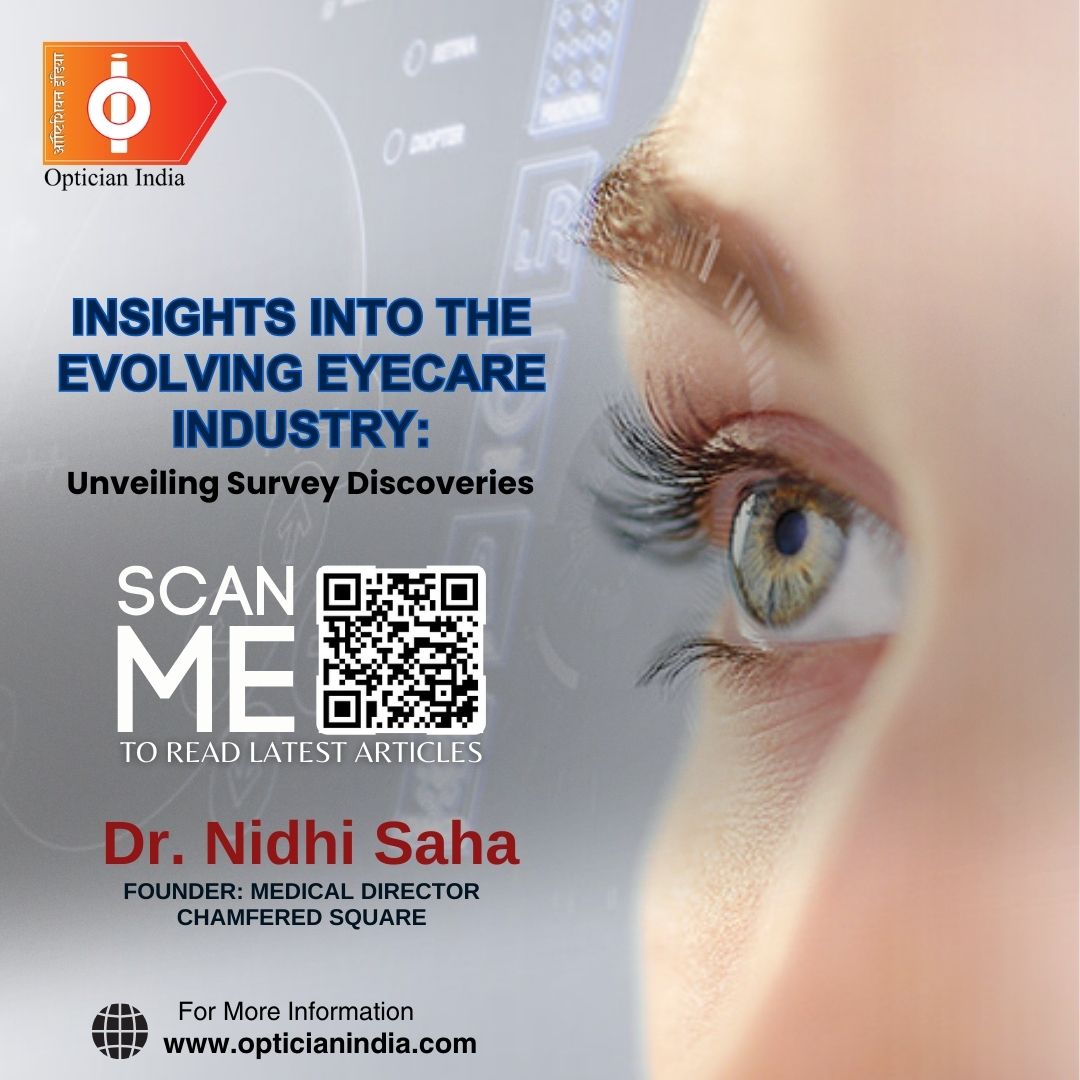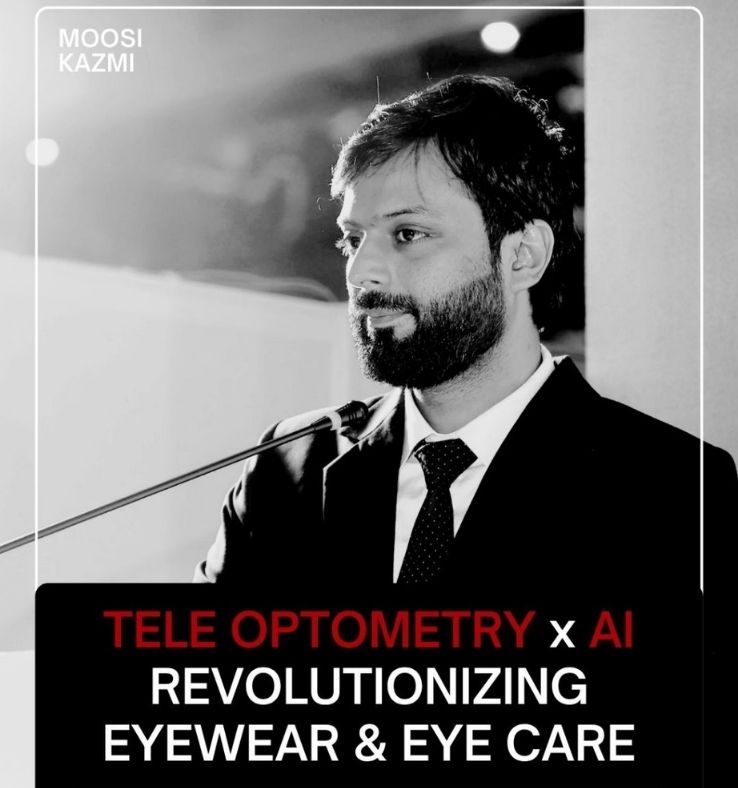Insights into the Evolving Eyecare Industry: Unveiling Survey Discoveries

Introduction: Navigating the Visionary Landscape
In the ever-evolving world of healthcare, vision care stands as a vital component of overall well-being. The eyecare industry has experienced a transformative journey, influenced by technological innovations, heightened awareness, and shifts in lifestyle choices. A comprehensive survey, capturing the pulse of the population's eyecare preferences and perceptions, offers invaluable insights into the industry's growth trajectory.
Peering into EyeCare Preferences
Conducted across diverse demographics encompassing varied age groups and geographical regions, the survey aimed to unravel the nuanced preferences, awareness levels, and technological inclinations within the realm of eyecare. Employing a multifaceted approach, it gathered responses through online platforms and in-person interactions to provide a comprehensive overview.
A Detailed Glimpse
- Rising eyecare awareness: A study in the US discovered that most people (87.5%) think having good vision is essential for staying healthy. Surprisingly, nearly half of them (47.4%) said that losing their vision would be the worst thing for their health. An overwhelming number of respondents acknowledged an increased understanding of the significance of regular eye examinations in maintaining optimal vision health.
- Embracing technological solutions: Research about how eye patients use technology discovered that most of them have cell phones (90%), landline phones (81%), and computers (80%). When it comes to getting health reminders, they like phone calls and emails more than using social media for that purpose.
A global survey asked eye doctors about using artificial intelligence (AI) in eyecare. They found most eye doctors preferred using AI to help them in their work (88.1%) rather than letting AI make diagnoses or decide on treatments. The eye conditions they thought AI could help with the most were diabetic retinopathy, glaucoma, age-related macular degeneration, and cataracts. A pronounced preference for cutting-edge technologies integrated into eyecare solutions, emphasizing their inclination towards advanced diagnostic tools and lens innovations.
- Shifting eyewear preferences: Bifocal and multifocal devices help us see clearly when things are at different distances. There are different types, like glasses, contact lenses, and lenses put inside the eye. Contact lenses are special because they are closer to the eye, giving a wider view and less distortion compared to glasses. Also, they are comfortable and can be easily worn all day and changed easily. Additionally, they are good for people who cannot have surgery. Contact lenses can move with the eye, allowing us to shift our focus faster. They are mostly used for fixing reading problems in adults and controlling short- sightedness in kids. Many people can benefit from these lenses, but achieving a precise lens to fit the requirements of all patients, especially those of different age groups can be challenging.
The population expresses interest in multifunctional and stylish eyewear. This inclination toward fashionable eyewear that seamlessly integrates vision correction reflects a changing consumer landscape.
Table: Eyewear Types and Preferences
 |
Flowchart: Evolution of EyeCare Trends: Awareness, Technology, and Eyewear Preferences
Eyecare awareness
↓
Eyecare importance
Understanding of eye examinations
↓
Technological preferences
Patient technology use
Preference for health reminders
↓
AI integration in eyecare
Doctor preferences on AI use
Eye conditions AI could assist with
↓
Different types of eyewear available
↓
Shifting eyewear preferences
Exploring Drivers of Industry Growth
The burgeoning growth witnessed in the eyecare industry is underpinned by a confluence of factors. Technological advancements, particularly in lens design and diagnostic tools, have emerged as pivotal catalysts for this transformative journey. Simultaneously, the amplification of awareness campaigns regarding the importance of routine eye examinations, coupled with evolving lifestyle choices, has propelled the demand for innovative eyecare solutions.
Challenges and Opportunities on the Horizon
While the industry experiences exponential growth, it grapples with persistent challenges. Accessibility to eyecare services, especially in remote or underserved regions, remains a concern. However, these challenges serve as an impetus for the industry to explore innovative avenues, such as telemedicine and outreach programs––thereby unveiling promising opportunities for expansion and inclusivity.
Charting the Future of Eyecare: Technological Progress
The future of eyecare appears promising, buoyed by groundbreaking technological advancements. From AI-driven diagnostics to the integration of wearable tech for vision correction, the industry is on the brink of a transformative phase, aiming to enhance accessibility and efficacy in delivering eyecare solutions.
Conclusion: Picturing the Visionary Path Ahead
These findings can guide the eyecare industry's progression. A convergence of technology, awareness initiatives, and evolving consumer preferences propels the industry forward. As we set our sights on the future, the industry's commitment to innovation and accessibility promises a world where crystal-clear vision is a shared reality.
Suggested Reads
1. Khanna, R., Cicinelli, M., & Marmamula, S. Comprehensive eye care - Issues, challenges, and way forward. Indian Journal of Ophthalmology, 2020;68(2):316-323. https://www.ncbi.nlm.nih.gov/pmc/articles/PMC7003576/
2. Scott, A. W., Bressler, N. M., Ffolkes, S., Wittenborn, J. S., & Jorkasky, J. Public attitudes about eye and vision health. JAMA Ophthalmology,2016;134(10):1111-1118. https://pubmed.ncbi.nlm.nih.gov/27490785/
3. Aleo, C. L., Hark, L., Leiby, B., Dai, Y., Murchison, A. P., Martinez, P., & Haller, J. A. Ophthalmic patients’ utilization of technology and social media: An assessment to improve quality of care. Telemedicine Journal and E-Health: The Official Journal of the American Telemedicine Association, 2014;20(10):887–892. https://pubmed.ncbi.nlm.nih.gov/25188532/
4. Gunasekeran, D. V., Zheng, F., Lim, G. Y. S., Chong, C. C. Y., Zhang, S., Ng, W. Y., Keel, S., Xiang, Y., Park, K. H., Park, S. J., Chandra, A., Wu, L., Campbel, J. P., Lee, A. Y., Keane, P. A., Denniston, A., Lam, D. S. C., Fung, A. T., Chan, P. R. V., … Ting, D. S. W. Acceptance and perception of artificial intelligence usability in eye care (APPRAISE) for ophthalmologists: A multinational perspective. Frontiers in Medicine,2022;9. https://www.frontiersin.org/articles/10.3389/fmed.2022.875242/full
5. Remón, L., Pérez-Merino, P., Macedo-de-Araújo, R. J., Amorim-de-Sousa, A. I., & González- Méijome, J. M. Bifocal and multifocal contact lenses for presbyopia and myopia control. Journal of Ophthalmology, 2020:1–18. https://doi.org/10.1155/2020/8067657

.jpg)

.jpg)
.jpg)
.jpg)


1.jpg)



.jpg)
.jpg)



_(Instagram_Post).jpg)
.jpg)
_(1080_x_1080_px).jpg)


with_UP_Cabinet_Minister_Sh_Nand_Gopal_Gupta_at_OpticsFair_demonstrating_Refraction.jpg)
with_UP_Cabinet_Minister_Sh_Nand_Gopal_Gupta_at_OpticsFair_demonstrating_Refraction_(1).jpg)

.jpg)








.jpg)



.png)




